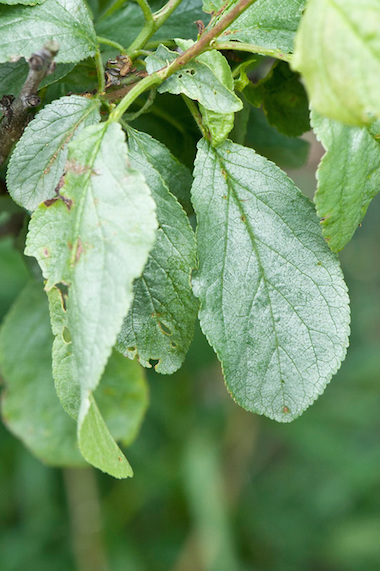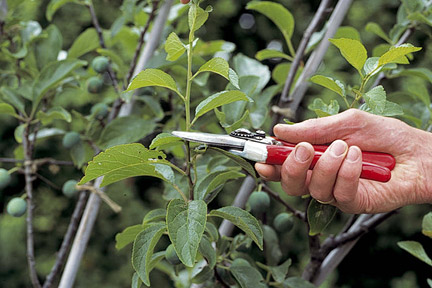Mid Summer is an important event in the fruit tree world, not only are the fruits forming on the trees (and in the case of plums – nearly ready) but it is also an important time for pruning.
Summer pruning is an essential task for fruit trees as it encourages the development of fruiting spurs and in the case of stone bearing fruit (Plums and the likes) the only safe time of year to perform any kind of pruning, this is due to the risk of silver-leaf disease.
by Gareth Austin
Silver leaf disease is a disease of fruit trees, and in our wet climate it is commonly a fiend of plums, apricots and the other stone-bearing fruits.
Silver leaf disease is a fungus which lives on dead branches and when active its spores enter the tree through pruning wounds (and other injuries such as lawnmower damage!), when the tree is attacked the toxin travels up the stems to the leaves, causing the leaves to develop a silvery colour – the branch then starts to die off, the branch produces fungus spores and the process is repeated over and over.
In our wet climate pruning carried out in the winter time is near guaranteed to lead to an infection – however pruning carried out now benefits from (a) – wound healing quicker due to the plants being in active growth, (b) the sap rising in the plants helps to reduce infection, (c) its drier in the summer months so this fungus is less abundant.
Summer pruning is all about promoting fruit production, where in Apples and Pears winter pruning is about shaping and growth. For summer pruning, simply put, whatever the growth has been achieved this year by the tree reduce this by 2/3, to an outward facing node. So if your Bramley grows 6’ per year, you shorten each branch by 4’.
You shouldn’t be pruning into any part with fruit on it, as the fruit forms on growth which is 2 years old, so if you’re pruning into the fruit you’ve gone too far!
It’s not common practice to cover wounds with products such as Arbrex or Prune and Seal nowadays, it’s considered better practice to leave wounds exposed for better healing.
And the last ‘top tip’ for pruning in the summer is to (a) have sharp secretors and (b) give your cutters a wee dip into fungicide between pruning different trees, this helps to reduce the potential ‘carry over’ of disease from one tree to the other.









